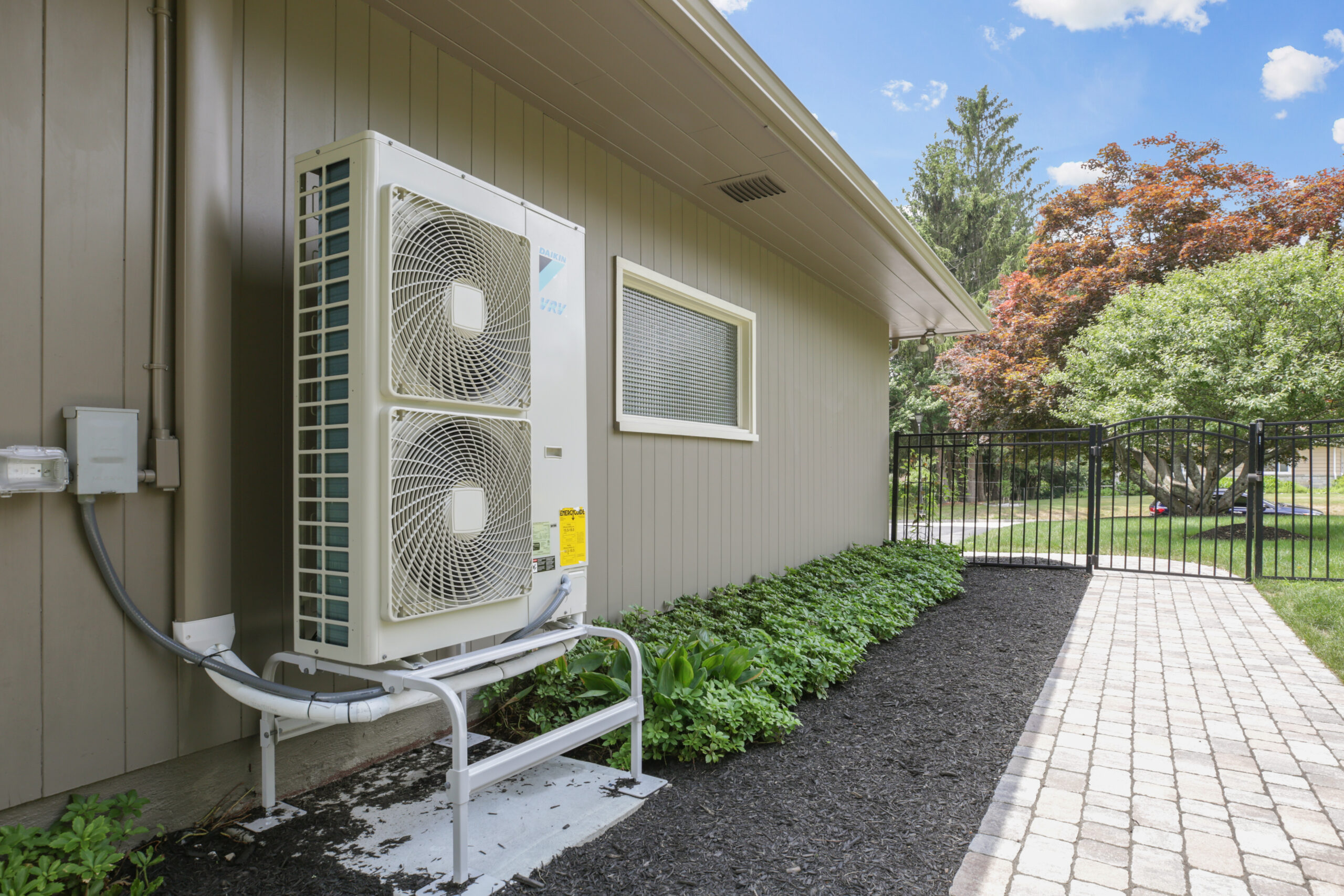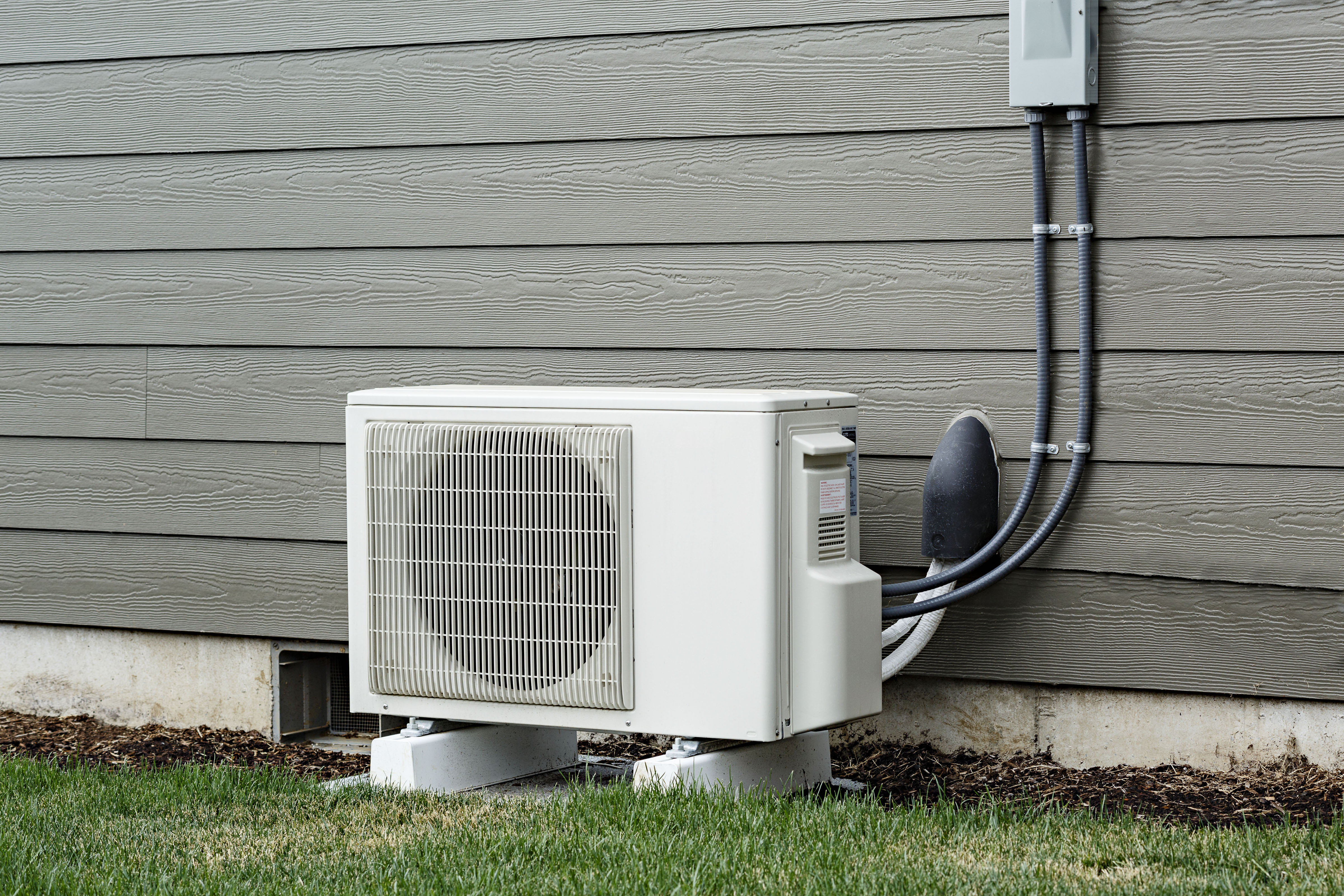In “The Ultimate Guide To Mini-Split AC System Weatherproofing For Outdoor Units,” you will discover essential tips and tricks to protect your outdoor air conditioning system from the unforgiving elements. From understanding the importance of weatherproofing to practical steps you can take, this guide will equip you with the knowledge needed to ensure the longevity and optimal performance of your mini-split AC system. Whether you live in a region known for intense heatwaves or frigid winters, this comprehensive guide will be your go-to resource for keeping your outdoor unit protected year-round.
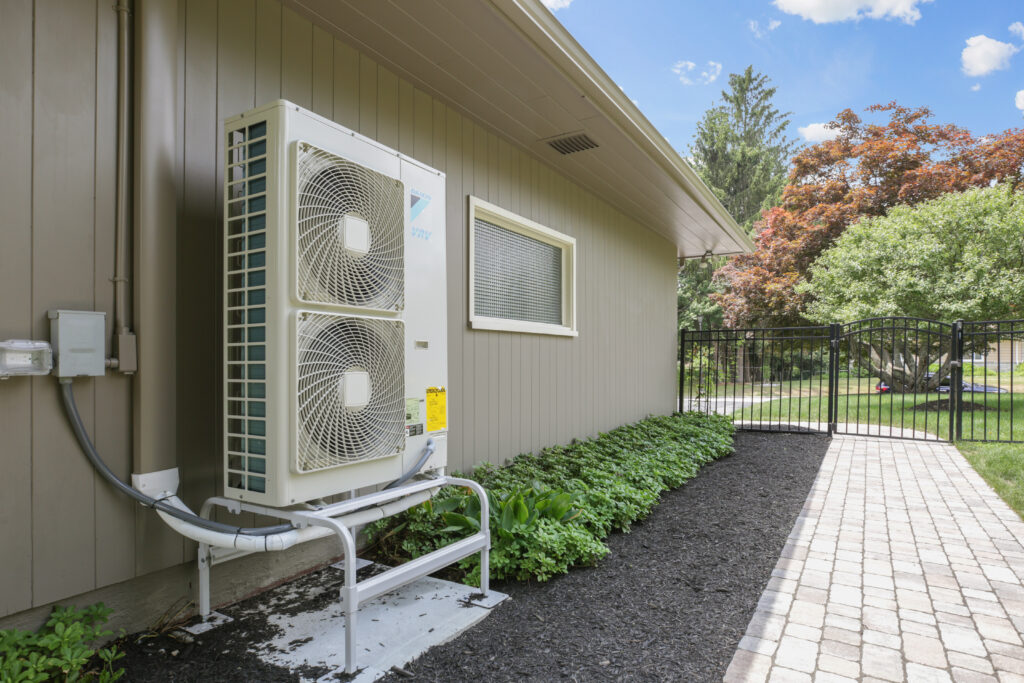
This image is property of storage.googleapis.com.
Understanding Mini-Split AC Systems
The basics of a mini-split AC system
If you’re looking for a versatile and energy-efficient way to cool your home, a mini-split AC system may be the perfect solution for you. These systems, also known as ductless air conditioners, consist of two main components: an outdoor unit and one or more indoor air-handling units. The indoor units are mounted on walls or ceilings, while the outdoor unit typically sits on a bracket outside the home. With a mini-split AC system, you have the ability to cool individual rooms or zones, providing personalized comfort and energy savings.
How a mini-split AC system works
Unlike traditional central air conditioning systems, mini-split AC systems do not rely on ductwork to deliver cool air throughout your home. Instead, they use a refrigerant to transfer heat from the indoor units to the outdoor unit. The refrigerant absorbs heat from the indoor air and carries it outside, where it is released. The cooled refrigerant is then pumped back into the indoor units to continue the cooling cycle. This allows for efficient and targeted cooling, without the energy losses associated with ductwork.
Types of mini-split AC systems
There are a few different types of mini-split AC systems to choose from, depending on your specific needs and preferences. Single-zone systems consist of one outdoor unit and one indoor unit, making them ideal for cooling a single room or area. Multi-zone systems, on the other hand, can connect multiple indoor units to one outdoor unit, allowing you to cool multiple rooms or zones independently. Additionally, there are also ducted mini-split AC systems, which use a network of ducts to distribute air throughout the home, similar to traditional central air conditioning systems. The type of system you choose will depend on the size and layout of your home, as well as your cooling preferences.
Importance of Weatherproofing Outdoor Units for Mini-Split AC Systems
Enhancing energy efficiency
Weatherproofing your mini-split AC system’s outdoor unit is crucial for maximizing its energy efficiency. When outdoor units are exposed to extreme weather conditions, they can lose efficiency and require more energy to operate. By properly weatherproofing the unit, you can help prevent heat loss or gain, ensuring that your system operates at its optimal level and reducing your energy consumption.
Improving system longevity
By protecting your mini-split AC system’s outdoor unit from harsh weather elements, you can significantly extend its lifespan. Moisture, extreme temperatures, and debris can all cause damage to the unit over time, leading to costly repairs or even system failure. By implementing weatherproofing measures, you can safeguard your outdoor unit and ensure that it continues to operate effectively for years to come.
Maintaining optimal temperature control
Weatherproofing your mini-split AC system’s outdoor unit also helps maintain optimal temperature control within your home. When the unit is exposed to excessive heat or cold, it may struggle to operate efficiently and deliver the desired cooling performance. By weatherproofing the unit, you can help maintain a consistent and comfortable temperature indoors, enhancing your overall comfort.
Preventing damage and unnecessary repairs
Extreme weather conditions can be damaging to your mini-split AC system’s outdoor unit. Rain, snow, wind, and hail can all cause physical damage to the unit, leading to expensive repairs or even the need for a complete replacement. By implementing weatherproofing measures, you can effectively protect the unit from these elements, reducing the risk of damage and saving you money in the long run.
Understanding Weather Elements that Affect Mini-Split AC Systems
Effects of direct sunlight
Direct sunlight can have a significant impact on the performance and efficiency of your mini-split AC system’s outdoor unit. When exposed to excessive heat from the sun, the unit may struggle to cool the refrigerant effectively, leading to reduced cooling performance and increased energy consumption. Additionally, prolonged exposure to sunlight can cause the unit to deteriorate over time, resulting in decreased lifespan and potential system issues. Proper shading or positioning of the unit can help mitigate these effects and ensure optimal performance.
Impact of rain and snow
Rain and snow can pose serious threats to your mini-split AC system’s outdoor unit if not properly weatherproofed. Excess moisture can cause electrical components to corrode, potentially leading to system malfunctions or failures. Additionally, the weight of accumulated snow can put strain on the unit, causing it to become overloaded and potentially collapse. Adequate weatherproofing measures, such as protective covers and snow guard kits, can help prevent these issues and ensure the longevity of your system.
Influence of wind
Wind can have a negative impact on the performance of your mini-split AC system’s outdoor unit if not properly addressed. Strong winds can cause the unit to vibrate or shake, leading to increased noise levels and decreased efficiency. Additionally, wind can blow debris into the unit, potentially causing damage to the internal components. By implementing wind baffles and ensuring proper placement of the unit, you can minimize the effects of wind and maintain the optimal performance of your system.
Damage from hailstorms
Hailstorms can be particularly damaging to your mini-split AC system’s outdoor unit. Hailstones can dent or puncture the unit, causing damage to the refrigerant lines or other critical components. This can result in refrigerant leaks, reduced cooling capacity, and compromised system performance. Protecting the unit with a suitable cover or installing hail guards can help prevent these issues and ensure that your system remains operational and efficient.
Best Practices for Placement of Outdoor Units
Choosing a suitable location
When deciding where to place your mini-split AC system’s outdoor unit, it’s important to consider a few key factors. Firstly, the unit should be positioned in an area with adequate airflow, free from obstructions such as shrubs or fences. Additionally, the location should be easily accessible for maintenance and service. It’s also essential to consider noise levels when selecting a location, as the outdoor unit can generate some noise during operation. By carefully choosing a suitable location, you can maximize the performance and longevity of your system.
Proper height and distance from walls
To ensure optimal airflow and performance, it is crucial to install the outdoor unit at the proper height and distance from surrounding walls or structures. The unit should be mounted at least a foot above the ground to prevent dust or debris from entering the system. Additionally, it should be placed at a sufficient distance from walls to allow for adequate airflow and ventilation. This will help ensure that the unit operates efficiently and effectively.
Orientation towards prevailing wind direction
Another important consideration when placing the outdoor unit is its orientation in relation to the prevailing wind direction. By positioning the unit to face the direction from which the wind typically comes, you can take advantage of natural airflow to improve system performance. This can help cool the unit more effectively and enhance energy efficiency. Considering the prevailing wind direction when choosing the location and orientation of the unit can lead to significant benefits for your mini-split AC system.
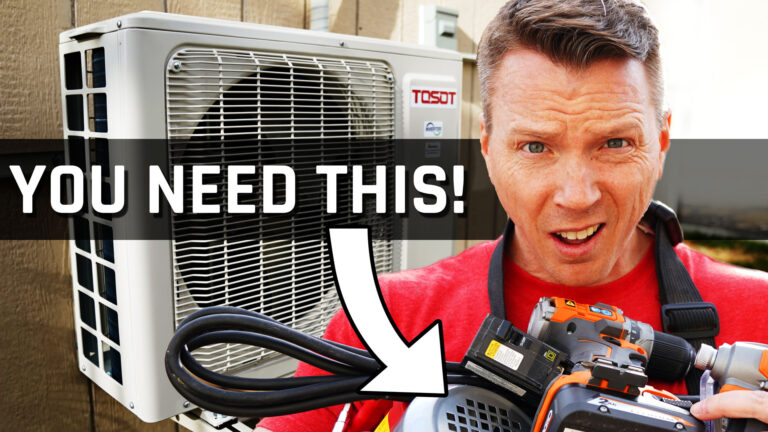
This image is property of lrn2diy.com.
Essential Weatherproofing Accessories
Protective covers
Protective covers are an essential weatherproofing accessory for mini-split AC system outdoor units. These covers are designed to shield the unit from rain, snow, and other elements, preventing damage and corrosion. When selecting a cover, be sure to choose one that is specifically designed for your unit’s make and model, ensuring a proper fit and optimal protection.
Mounting brackets and pads
Mounting brackets and pads are used to secure the outdoor unit and elevate it off the ground. These accessories play a crucial role in weatherproofing, as they prevent moisture from seeping into the unit, improve airflow, and minimize vibration. When installing mounting brackets and pads, be sure to follow the manufacturer’s guidelines and use high-quality materials for a secure and stable setup.
Snow guard kits
Snow guard kits are particularly important for mini-split AC systems located in regions that experience heavy snowfall. These kits are designed to prevent snow and ice from accumulating on the unit, reducing the risk of overload or collapse. Installing a snow guard kit can help ensure the longevity and optimal performance of your system during the winter months.
Wind baffles
Wind baffles are accessories that help redirect and control the airflow around the outdoor unit. They are particularly useful in areas prone to strong winds, as they can minimize the effects of wind on the system. By installing wind baffles, you can ensure that the unit operates efficiently and experiences minimal vibration or noise.
Use of Mini-Split AC Covers
Protecting against debris and precipitation
One of the primary purposes of using a cover for your mini-split AC system’s outdoor unit is to protect it from debris and precipitation. Leaves, branches, and other debris can easily accumulate in the unit, obstructing airflow and causing various issues. Rain, snow, and other forms of precipitation can also damage the unit, leading to corrosion and potential system malfunctions. By using a cover, you can prevent these elements from reaching and damaging the unit, ensuring its optimal performance.
Material selection for AC covers
When choosing a cover for your outdoor unit, it’s important to consider the material carefully. Look for covers made from durable, weather-resistant materials such as polyester or vinyl. These materials are designed to withstand the elements and provide long-lasting protection for your unit. Additionally, some covers feature UV protection, which can help prevent fading and deterioration caused by sun exposure.
Proper cover installation and removal
Proper installation and removal of the AC cover are crucial for effective weatherproofing and system performance. When installing the cover, ensure that it fits snugly around the unit, with no gaps or loose areas. It’s important to follow the manufacturer’s instructions and secure the cover properly to prevent it from being blown off by strong winds. When removing the cover, do so gently to avoid damaging any components or causing injury. Regularly inspect the cover for any signs of wear or damage, and replace it if necessary to maintain optimal protection.
This image is property of basc.pnnl.gov.
Installing Supporting Brackets and Pads
Mitigating vibrations
Mounting brackets and pads play a crucial role in mitigating vibrations and reducing noise from your mini-split AC system’s outdoor unit. These accessories provide a stable and secure base for the unit, preventing excessive movement and vibrations. By minimizing vibrations, you can not only improve the overall comfort in your home but also extend the lifespan of your system by reducing wear and tear on internal components.
Preventing accumulation of snow underneath the unit
By elevating the outdoor unit off the ground using appropriate brackets and pads, you can prevent the accumulation of snow underneath the unit. This is particularly important in areas with heavy snowfall, as the weight of the accumulated snow can put strain on the unit and potentially cause damage. Elevating the unit also allows for easier snow removal, should it be necessary.
Choosing appropriate materials and sizing
When selecting supporting brackets and pads for your outdoor unit, it’s important to choose appropriate materials and ensure proper sizing. High-quality materials, such as stainless steel or galvanized steel, are recommended for durability and resistance to corrosion. The size of the brackets and pads should be matched to the weight and dimensions of your unit. Following the manufacturer’s recommendations and guidelines will help ensure a secure and stable installation.
Implementing Rain and Snow Guards
Benefits of using rain and snow guards
Rain and snow guards are essential weatherproofing accessories for mini-split AC system outdoor units, especially in regions with frequent precipitation. These guards effectively redirect rain and snow away from the unit, preventing water from entering and causing damage. By implementing rain and snow guards, you can ensure that your system remains protected and performs reliably, even in inclement weather conditions.
Installation guidelines
When installing rain and snow guards, it’s important to follow the manufacturer’s guidelines for proper placement and secure attachment. The guards should be positioned to allow for maximum protection while ensuring adequate airflow and ventilation. They should also be securely fastened to prevent them from being dislodged by wind or other external factors. Regularly inspect the guards to ensure they are intact and functioning properly, and make any necessary adjustments or replacements as needed.
Winter maintenance for optimal performance
During the winter months, it’s crucial to perform regular maintenance on your mini-split AC system’s outdoor unit to ensure optimal performance. Clear away any snow or ice accumulation from the unit and its surrounding area to prevent any obstructions. Inspect the rain and snow guards for any damage or signs of wear, and repair or replace them if necessary. Regularly check the unit for any signs of ice buildup or other issues that may impact its operation. By conducting routine winter maintenance, you can ensure that your system continues to provide reliable and efficient cooling, even in the harshest weather conditions.
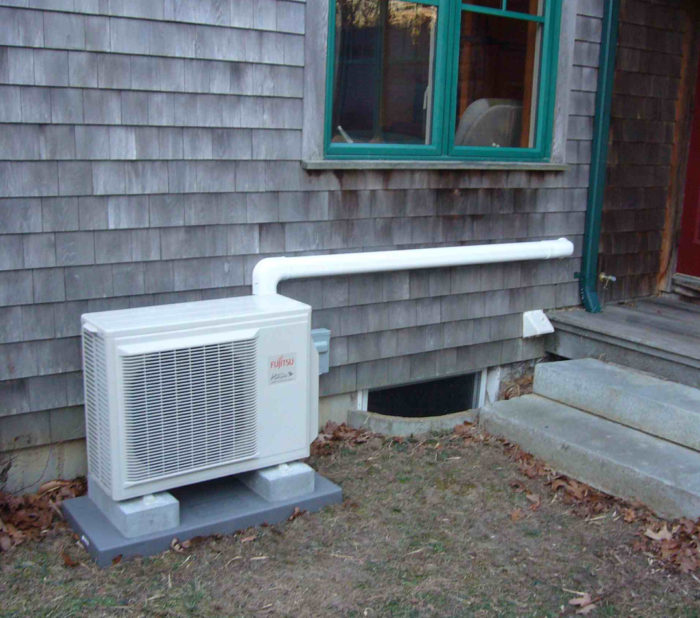
This image is property of images.greenbuildingadvisor.com.
Handling Wind Baffles
Significance of wind baffles
Wind baffles are important weatherproofing accessories for mini-split AC system outdoor units, specifically in areas prone to strong winds. These baffles help control and redirect the airflow around the unit, reducing the effects of wind on its performance. They also help minimize vibration and noise caused by wind, enhancing overall comfort. By using wind baffles, you can optimize the efficiency and longevity of your system.
Installing wind baffles
When installing wind baffles, it’s essential to follow the manufacturer’s guidelines for proper placement and attachment. The baffles should be positioned in a way that allows for unobstructed airflow while providing effective wind deflection. It’s important to check the baffles regularly for any damage or signs of wear, and replace them if necessary. By ensuring that the wind baffles are correctly installed and well-maintained, you can mitigate the effects of wind on your mini-split AC system’s outdoor unit and maintain optimal performance.
Ensuring uninterrupted airflow
While wind baffles help control and redirect airflow, it’s crucial to ensure uninterrupted airflow around the unit. The outdoor unit requires proper ventilation to operate efficiently, so it’s important not to obstruct the airflow when installing wind baffles. Be mindful of any potential obstructions, such as plants or structures, that may impede the airflow. By maintaining unobstructed airflow, you can ensure that your mini-split AC system operates effectively and delivers consistent cooling performance.
Routine Checks and Maintenance
Regular inspections of the outdoor unit
Regular inspections of your mini-split AC system’s outdoor unit are essential to ensure proper functioning and efficient performance. Inspect the unit for any signs of physical damage, such as dents or corrosion, which may indicate the need for repairs or replacement. Check the refrigerant lines for leaks and ensure that all connections are secure. Clean the unit regularly, removing any debris or obstructions that may have accumulated. By conducting regular inspections, you can address any issues promptly and prevent potential damage or system malfunctions.
Seasonal maintenance activities
Seasonal maintenance activities are crucial for the optimal performance of your mini-split AC system. Before the cooling season begins, check and clean the outdoor unit to remove any dirt or debris that may impede airflow. Inspect and replace the air filters as needed to maintain proper indoor air quality. During the winter months, ensure that the unit is properly protected from the elements, using covers, snow guards, and other appropriate accessories. By following a seasonal maintenance routine, you can prolong the lifespan of your system and ensure reliable cooling throughout the year.
Troubleshooting common issues
While mini-split AC systems are generally reliable, it’s possible to encounter common issues from time to time. Troubleshooting common issues such as insufficient cooling, unusual noises, or system malfunctions can help you identify and address the problem effectively. Check for any loose or disconnected wires, clogged filters, or refrigerant leaks. Consult the manufacturer’s manual or seek professional assistance if needed. By troubleshooting common issues, you can potentially resolve them on your own or provide valuable information to a professional technician, saving both time and money.
Knowing when to call a professional
While regular maintenance and troubleshooting are important for the upkeep of your mini-split AC system, there may be instances when it’s best to call a professional. If you encounter complex or recurring issues, or if you are unsure of how to proceed with repairs or maintenance, it’s advisable to seek professional assistance. Trained technicians have the expertise and knowledge to diagnose and resolve more advanced issues, ensuring the safety and optimal performance of your system. When in doubt, it’s better to rely on professional assistance to minimize the risk of further damage or improper repairs.
In conclusion, weatherproofing your mini-split AC system’s outdoor unit is essential for enhancing energy efficiency, improving system longevity, maintaining optimal temperature control, and preventing damage and unnecessary repairs. Understanding the weather elements that affect mini-split AC systems, following best practices for placement, and using essential weatherproofing accessories such as protective covers, mounting brackets and pads, snow guard kits, and wind baffles can help ensure the reliable and efficient operation of your system. By implementing routine checks and maintenance, as well as knowing when to seek professional assistance, you can enjoy the benefits of a well-protected and high-performing mini-split AC system for years to come.
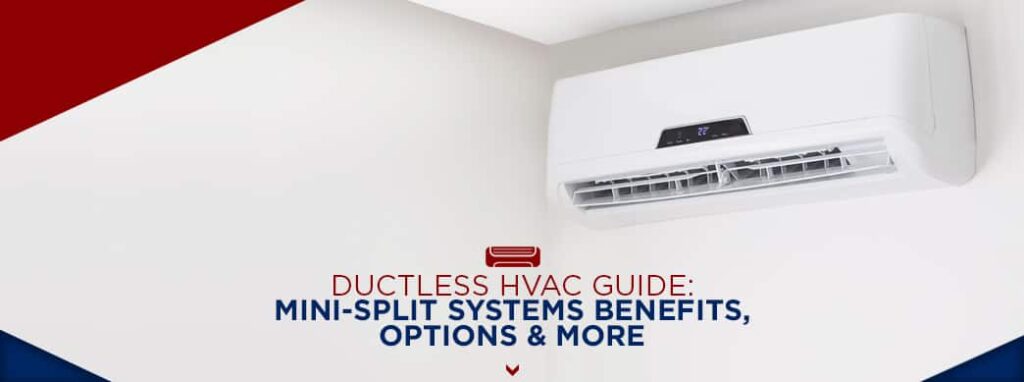
This image is property of homeclimates.com.

